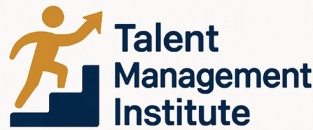
Defining Backfill Positions
Introducing the Concept of Backfill Positions
Understanding backfill positions is paramount in effective talent management. A backfill position arises when a current employee leaves a role, whether due to resignation, promotion, or any other reason that creates a vacancy within the organization. This process isn't just about replacing an employee but involves strategic planning to ensure the new hire or reassignment aligns with the company’s long-term goals. A backfill can be a short-term solution, such as temporary backfilling while the original position holder is on leave. Alternatively, it can also represent a more permanent adjustment to your workforce. The backfill process requires organizations to think ahead, ensuring they identify suitable roles and responsibilities for new and existing team members. During this process, it is essential to consider the job description of the vacant position. Understanding the specific skills and attributes necessary for the role helps in sourcing and selecting the best employee for the job. Embracing backfill strategy can ensure smooth continuity of work, especially in critical positions within the company. Discover how effective talent management can elevate your team. Proper implementation of a backfill position process can also leverage succession planning and cross-training opportunities, ensuring that the most capable employees transition into roles with greater responsibilities, thereby enhancing overall team productivity and organizational resilience.Identifying the Need for Backfill Positions
Recognizing the Necessity for Swift Action
Understanding the importance of backfill positions begins with identifying when they become essential to an organization’s talent management strategy. A backfill position is typically created when an employee leaves a role within a company, whether temporarily for personal leave or permanently due to resignation or internal transition. Recognizing the need for a backfill strategy is crucial in ensuring continuity of operations and maintaining the morale of remaining team members. In today’s dynamic business environment, roles are directly interlinked with other positions, making it imperative for organizations to quickly address any vacancies that may disrupt the workflow. The need for backfill positions often arises from unforeseen circumstances such as sudden employee resignation, medical leave, or even long-term assignments elsewhere within the company. Mitigating disruptions caused by a vacant position requires a proactive approach to managing backfilling needs efficiently. The process requires a keen understanding of the organization’s workforce dynamics and its impact on long-term objectives. For instance, companies that consistently neglect to implement effective backfilling practices may find themselves facing challenges related to productivity losses and employee dissatisfaction. Moreover, the absence of immediate and competent hiring for these roles can lead to missed opportunities as key projects falter without the necessary talent. For organizations aiming for the best outcomes, immediate recognition and the ensuing execution of a well-planned backfill process are vital to maintaining operational stability and employee morale. Succession planning and cross-training current employees are seen as pivotal strategies in ensuring that the transition into backfill positions is as seamless as possible. To dive deeper into this topic and explore effective strategies for managing talent, you can learn more here.Challenges in Managing Backfill Positions
Addressing Common Obstacles in Administering Backfill Positions
Navigating the complications of managing backfill roles can be daunting for any organization. There are several challenges that often arise throughout this process, impacting the overall effectiveness of talent management. One significant challenge is the strain on resources. When a current employee takes leave or transitions to another role, the organization needs to swiftly act to fill the vacant position. This often requires reallocating resources or increasing the workload of other team members, which can disrupt the team's dynamic and morale. Another obstacle is the fast-paced nature of the backfilling process. Organizations may feel pressure to fill roles immediately, leading to rushed hiring decisions that do not consider long-term needs or the best fit for both the position and the team. This hurried approach can result in selecting a candidate who may not align with the organization's culture or expectations, ultimately affecting the team's performance and cohesion. Moreover, organizations often face difficulties in aligning succession planning with backfilling needs. Without a strategic backfill strategy, there is a risk of leaving essential roles unplanned, potentially causing operational disruptions. Coupled with ineffective management software, these challenges can create bottlenecks in ensuring smooth transitions. Some companies also struggle with communication and transparency when dealing with backfill roles. Team members may feel left out of the loop, leading to confusion about their responsibilities or the expectations for the incoming employee. Hence, clear communication about the backfilling position process is crucial to avoid misunderstandings. To tackle these challenges, organizations can consider cross training current employees, which aids in creating a robust bench of skilled staff ready to step into roles at short notice. Emphasizing pre employment screening and simplifying the job description are also best practices that help streamline the hiring process, ensuring the selection of the top talent available. Addressing these challenges proactively is essential for optimizing workforce allocation in modern enterprises, ensuring that talent management efforts lead to sustained success and a positive work environment. For more tips on effectively managing these dynamics, consider reading about optimizing workforce allocation in modern enterprises.Strategies for Effective Backfill Position Management
Best Practices for Managing Backfill Positions
Effectively managing backfill positions is critical to maintaining organizational continuity and avoiding disruptions. Here are several strategies that can be implemented to streamline the backfill process:- Develop a Clear Job Description: Before initiating the backfill process, it's essential to create a comprehensive job description. This document should detail the responsibilities, required skills, and experience needed for the role. A well-defined job description can guide the search for suitable candidates, whether internal or external.
- Leverage Succession Planning: Succession planning is a proactive approach to talent management that prepares an organization for future vacancies. By identifying and nurturing current employees who demonstrate the potential for key roles, companies can ensure they have a pool of candidates ready to step into backfill positions as needed.
- Implement Cross-Training Programs: Cross-training employees in multiple roles ensures that the organization has a versatile workforce. This tactic can provide a seamless transition when a position becomes vacant, as team members are already familiar with the responsibilities involved.
- Use Talent Management Software: Incorporating management software can help streamline the backfill management process by tracking employee skills, performance, and career aspirations. This technology can facilitate quick identification of the best employee for a vacant role.
- Prioritize Both Short and Long-Term Needs: While swiftly filling a backfilling position can minimize immediate disruptions, it's crucial to consider the long-term impact of the new hire or reassignment. Ensure that the candidate fits the company culture and possesses the potential for growth within the organization.
- Establish a Backfill Strategy: A solid backfill strategy involves a series of steps designed to quickly address vacancies due to leave or turnover. This strategy should include an action plan for both emergency hiring and planned backfilling of roles.
- Communicate Effectively with Team Members: Open communication is key to maintaining team morale during periods of change. Keeping employees informed of changes in the team structure and the reasons behind them can help mitigate uncertainty and enhance team cohesion.
The Impact of Backfill Positions on Team Dynamics
Influence on Team Dynamics and Productivity
Backfill positions, when managed effectively, have the potential to maintain or even enhance team dynamics. When a team member leaves a position, whether temporarily or permanently, it creates a gap that often needs immediate attention. Properly executed backfilling helps ensure that the workflow continues with minimal disruption, allowing the team to maintain its rhythm and productivity.
Integration of New or Temporary Employees
The introduction of a backfilling position can breathe new life into the team, bringing in fresh perspectives that inspire innovative solutions. However, challenges may arise when integrating these new or temporary employees into an established team. Effective onboarding processes are crucial, as they help new hires quickly adapt to the culture and understand their roles.
Role of Current Employees in Facilitating Transition
Current team members play a vital role in backfill management. They can provide valuable assistance through cross training, thereby equipping the new or temporary employee with the necessary skills and knowledge to perform efficiently. This not only aids the backfill process but also enhances the skill set of the existing team, preparing them for succession planning and future roles.
Long-term and Short-term Considerations
Managing backfill positions is a delicate balance between finding a quick fix and ensuring that the company meets its long-term strategic goals. While the immediate need may push for a swift hire, it is crucial to align the backfill strategy with the organization's vision to attract and retain top talent. This involves careful talent management planning and use of management software to analyze current needs versus future expectations.













